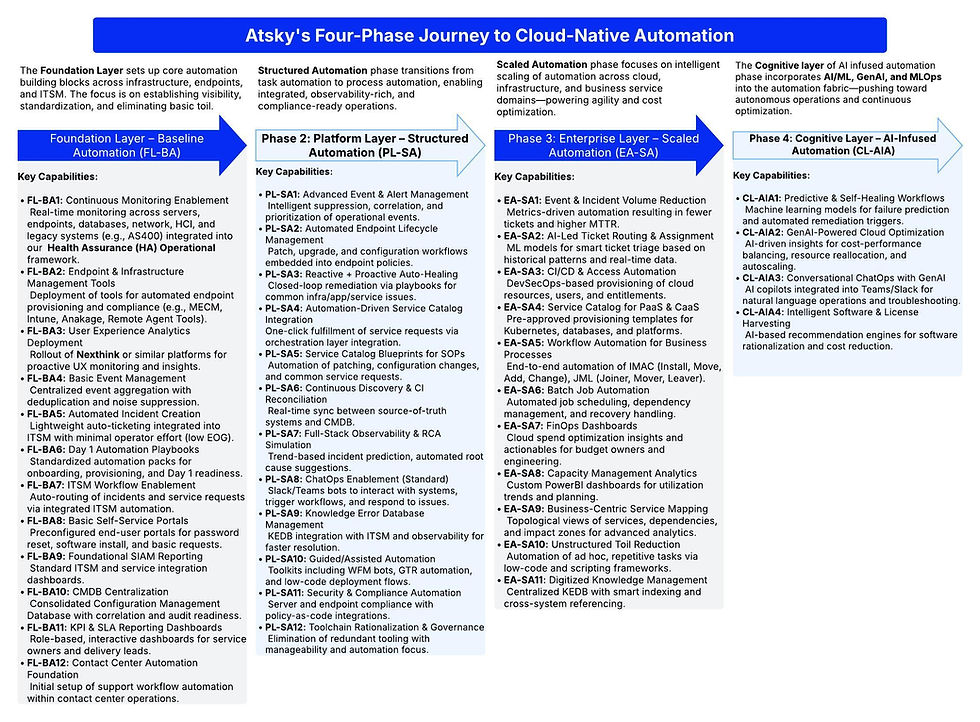Atsky Initiative: Navigating the Complexities of Modern Architectures
- shweta1151
- Oct 1, 2023
- 3 min read
Modern technological frameworks like containers and Kubernetes bring forth immense advantages but also pose distinctive challenges. In this Atsky Spotlight, delve into the methodologies to maintain the security of your applications throughout the development cycle, explore indispensable tools and platforms for enhanced security and compliance, and much more!

By 2027, it’s projected that 90% of organizations worldwide will implement containerised applications in production, a monumental increase from less than 40% in 2021. Containers are notably more streamlined than virtual machines (VMs), allowing developers to virtualize at the operating system (OS) level, while orchestrators like Kubernetes manage containers on a larger scale. This enables the rapid and efficient development and deployment of software at an extensive scale, but it also introduces new challenges at every phase of the development cycle. Emerging best practices for constructing and operating secure containers range from utilizing secure base images to addressing vulnerabilities and managing secrets effectively.
In this Atsky Spotlight session, our partner shares insights on the symbiotic relationship between security and development in the realm of containers and Kubernetes, the realisation of optimal DevSecOps journeys, and more.
Challenges and Solutions in Container and Kubernetes Security
Containers, essentially processes on a Linux machine, are contained through the kernel, contrasting with traditional VMs which operate within the host machine’s operating system. The evolution of this technology has led to the implementation of additional kernel controls like cgroups and namespaces, which serve to lock down and restrict processes within the OS.
However, the security challenges encountered in containers and Kubernetes are reminiscent of those in traditional VMs. Regardless of whether it’s operating on VMs in a data center or on Azure/AWS/GCP, vulnerabilities like remote code execution in Tomcat can be exploited by attackers. The fundamental difference lies in the discovery of such vulnerabilities, necessitating a comprehensive continuous integration and delivery (CICD) process involving building, testing, shipping, and deploying based on images.
Traditional security and vulnerability management tools are often incompatible with containers, complicating the management of vulnerabilities in production. Addressing vulnerabilities in running containers isn’t as straightforward as patching them; it necessitates addressing the underlying image and subsequently retesting, reshipping, and redeploying all dependent containers.
The Imperative of Integrating Security in DevOps
The advent of DevOps, with its emphasis on automation, has revolutionised development and delivery processes, outpacing conventional security methodologies. To stay ahead, security must be integrated into these processes, embedding policy checks and security assessments into the delivery pipeline right from the source code development stage.
This proactive approach to security, or “shift left security,” automates security policies in the pipeline to identify issues before production. This not only expedites security testing but also enables security teams to match the pace of efficient DevOps teams, allowing them to focus on emerging and higher-order security issues.
Automating Security in CICD Pipelines
Security can be ingrained from the inception of the development process, ensuring secure file configurations and minimising vulnerabilities. The base image serves as the foundational layer upon which source code, additional applications, or OS modifications are built to ensure compatibility with the Kubernetes environment.
Utilizing a minimalistic, container-designed base image is crucial. Custom checks can be employed to ensure the absence of vulnerable libraries in the container image and vulnerabilities in the application’s source code. A range of open-source and premium tools enable proactive engagement in the security procedures, contributing to more robust protection of containers.
For an in-depth exploration of container and Kubernetes security, including overcoming prevalent challenges like misconfigurations and secrets management, establishing effective collaboration between IT and security, and more, join us in this Atsky Spotlight.
Access our insightful content or reach out for a close conversation.
Key Takeaways:
Implementing security measures throughout the application development lifecycle.
Adhering to best practices for constructing and operating secure containers.
Employing IaC scanning to identify misconfigurations in Dockerfiles and Kubernetes deployment YAMLs.
Understanding the components of an optimal DevSecOps journey.
Recognizing the tools and platforms conducive to enhanced security and compliance.





Comments